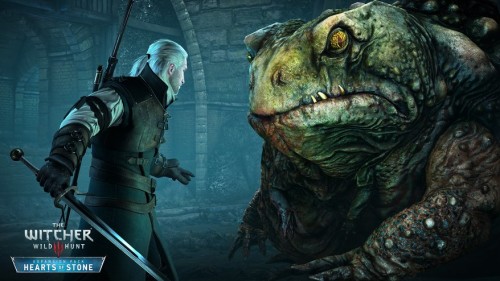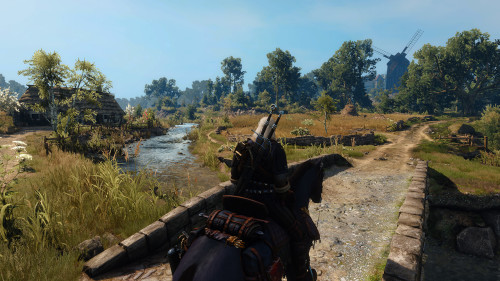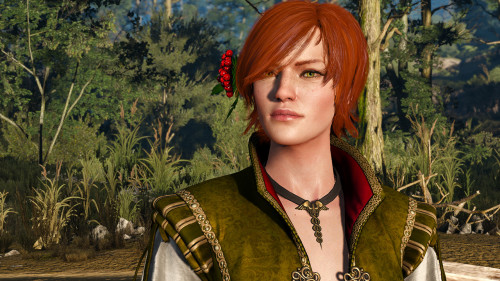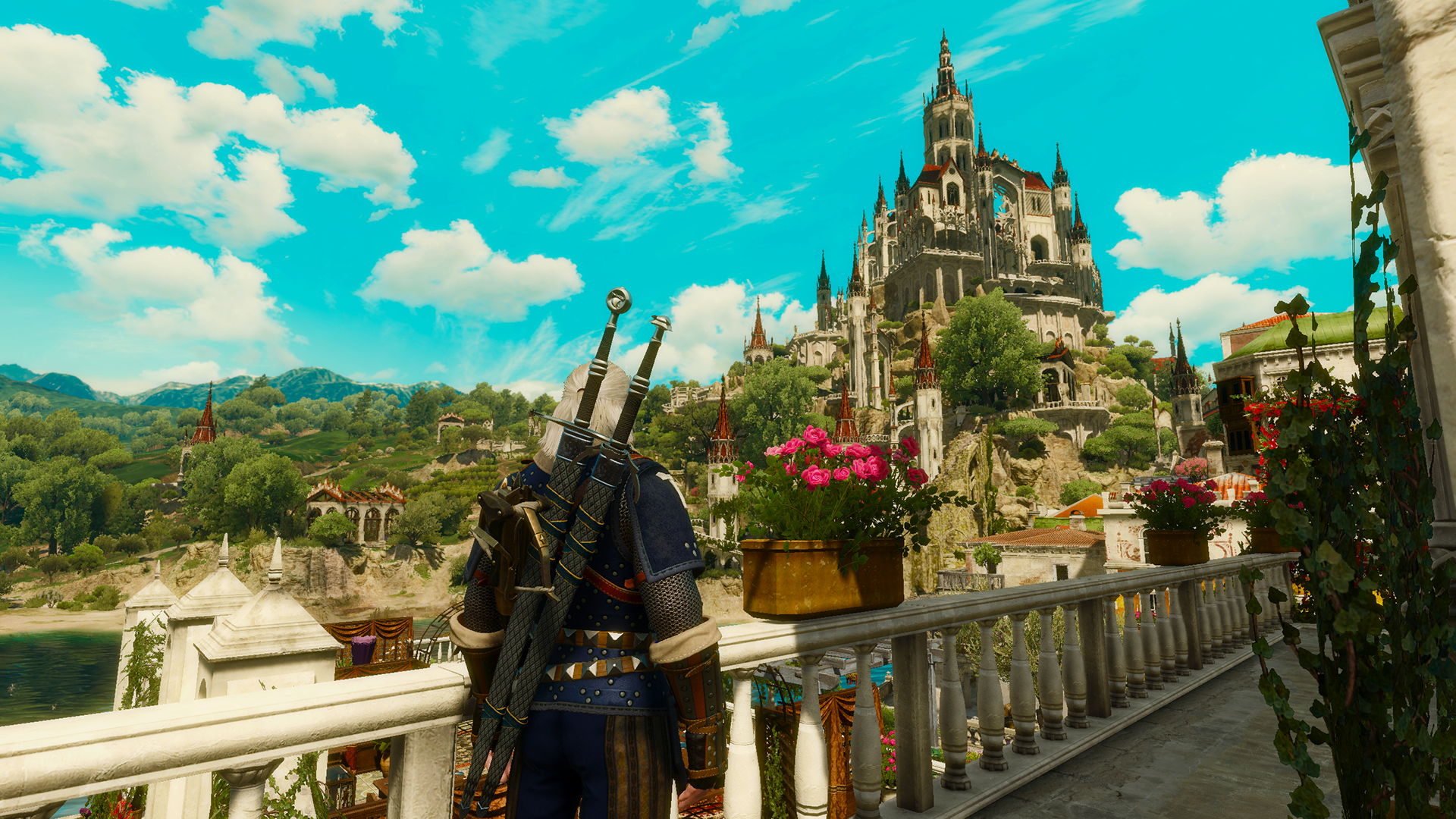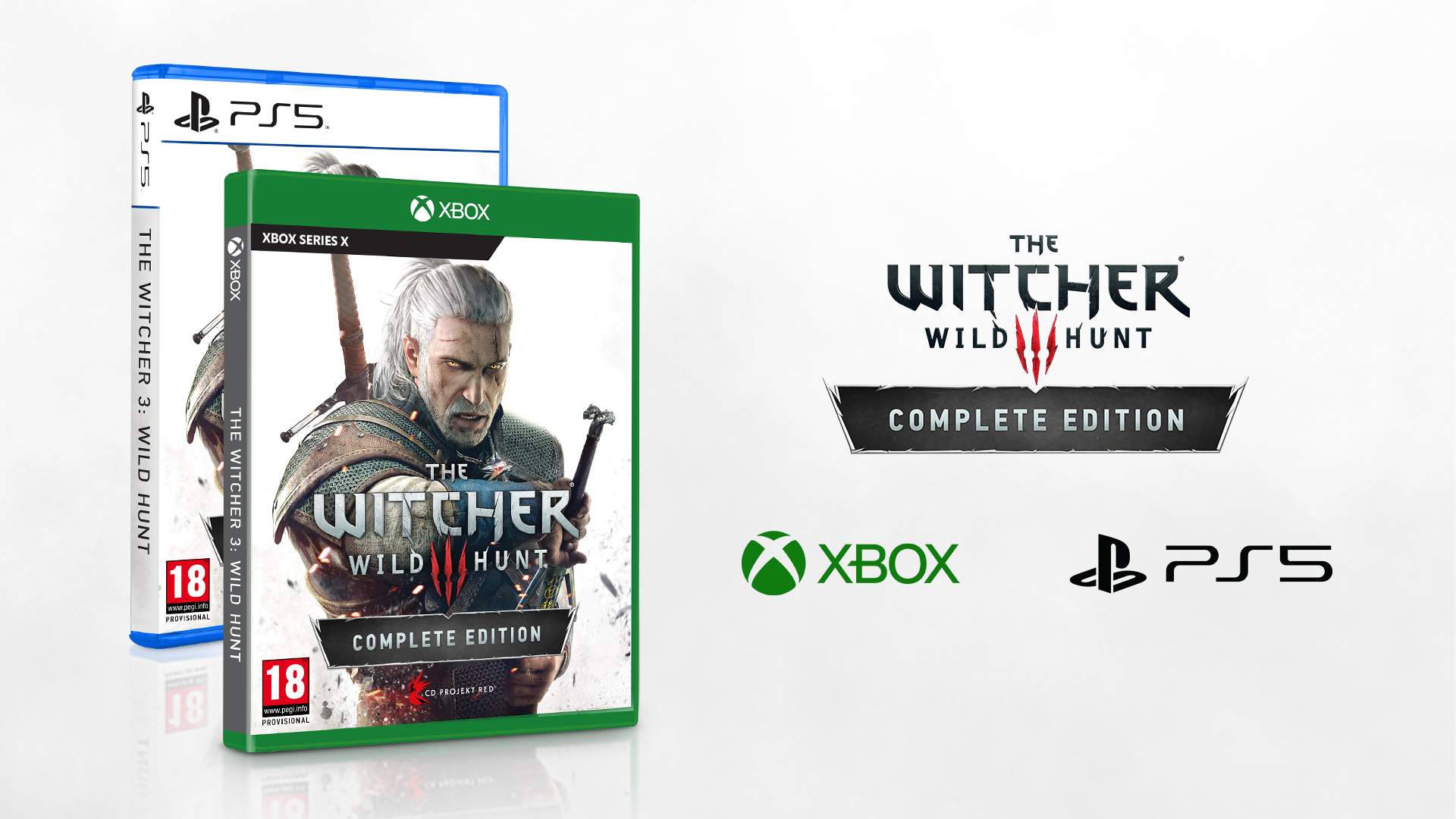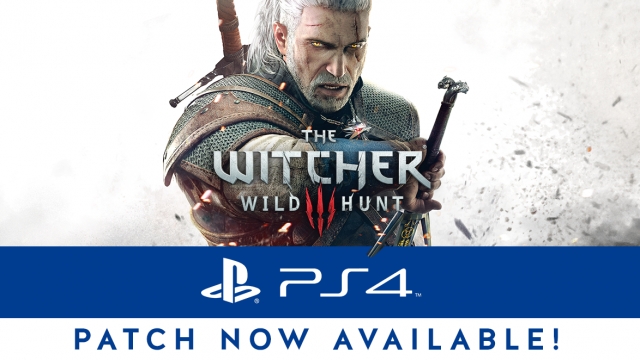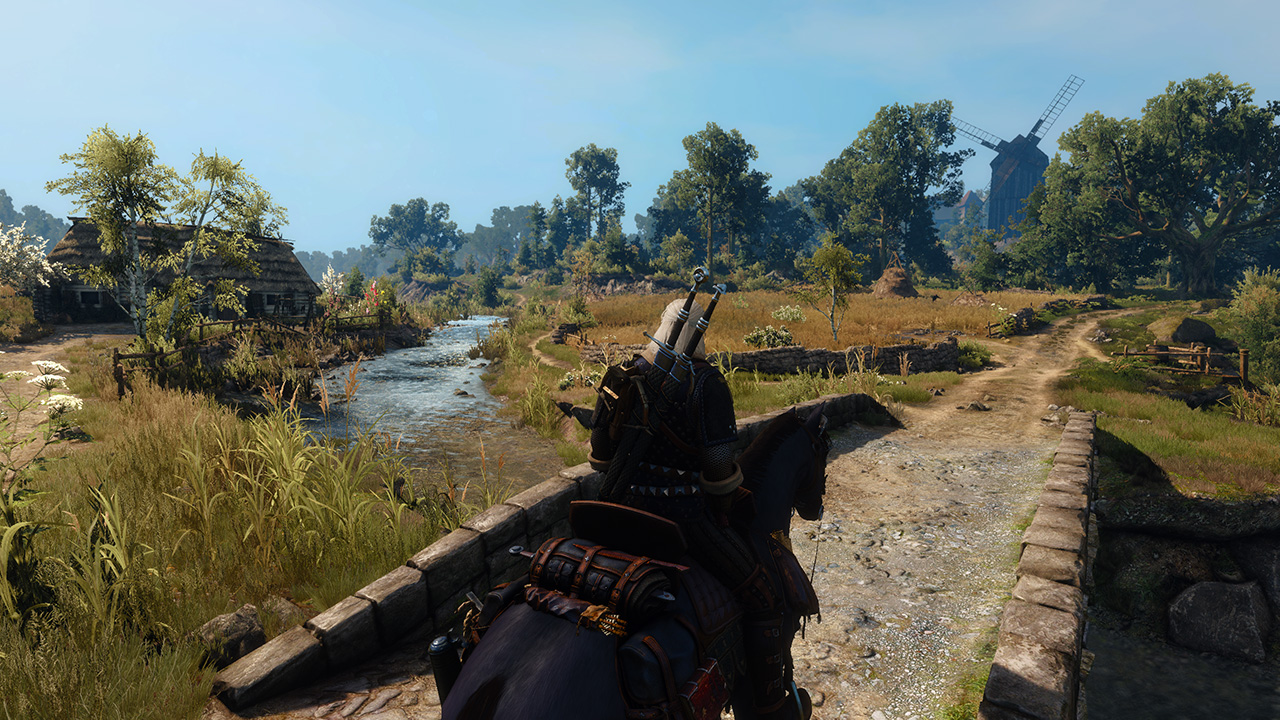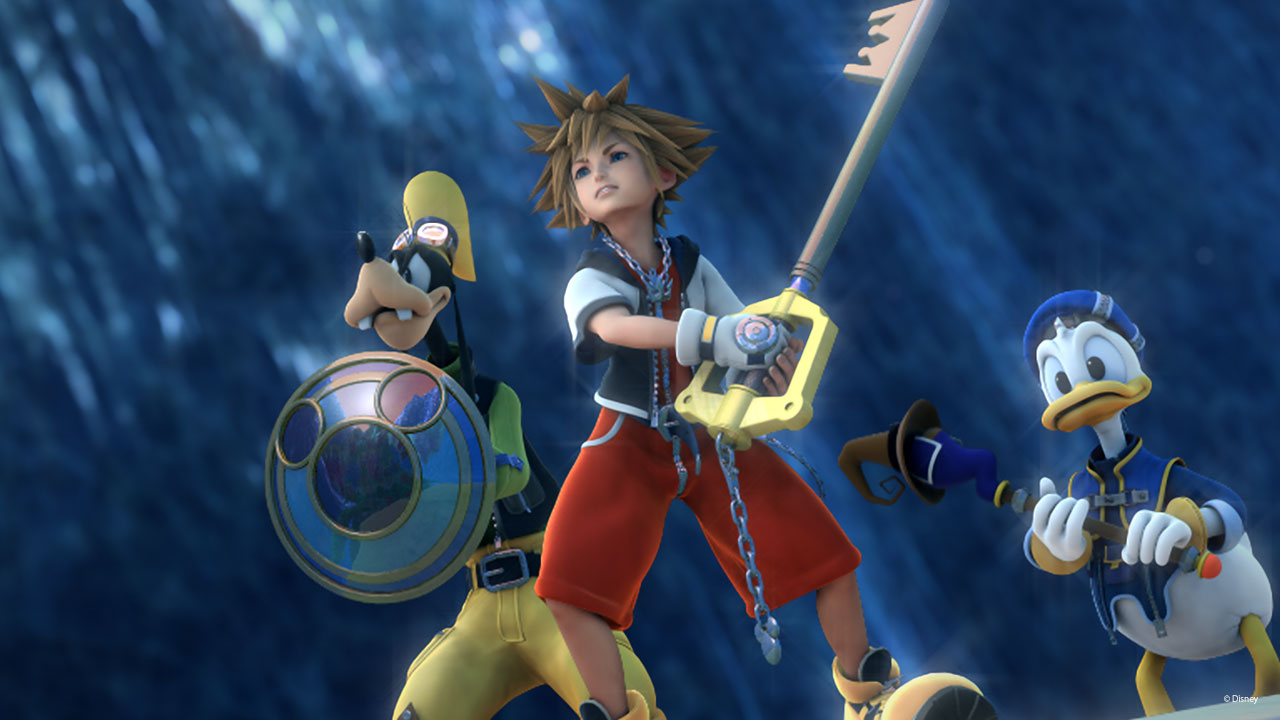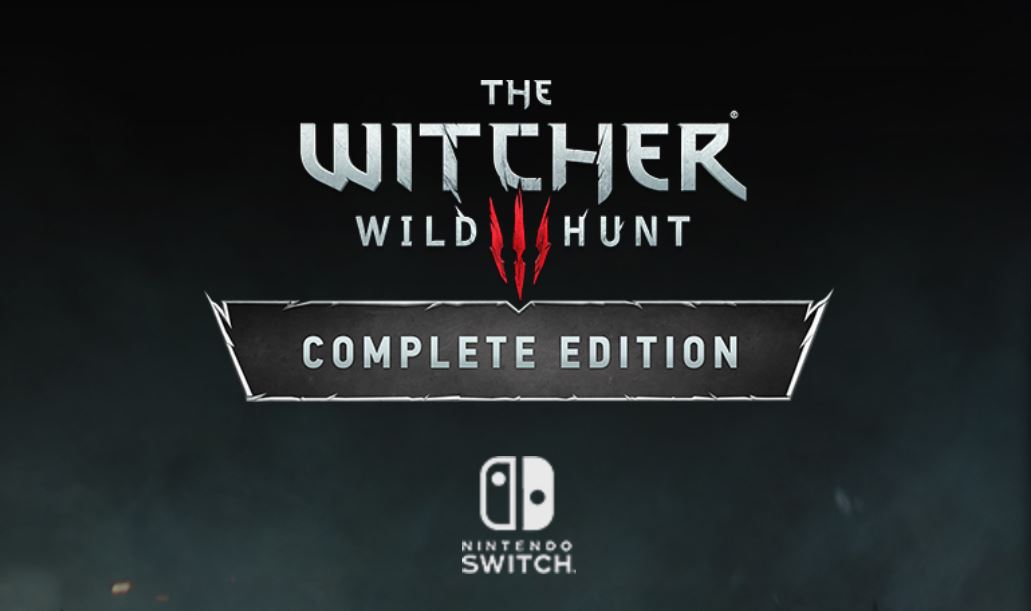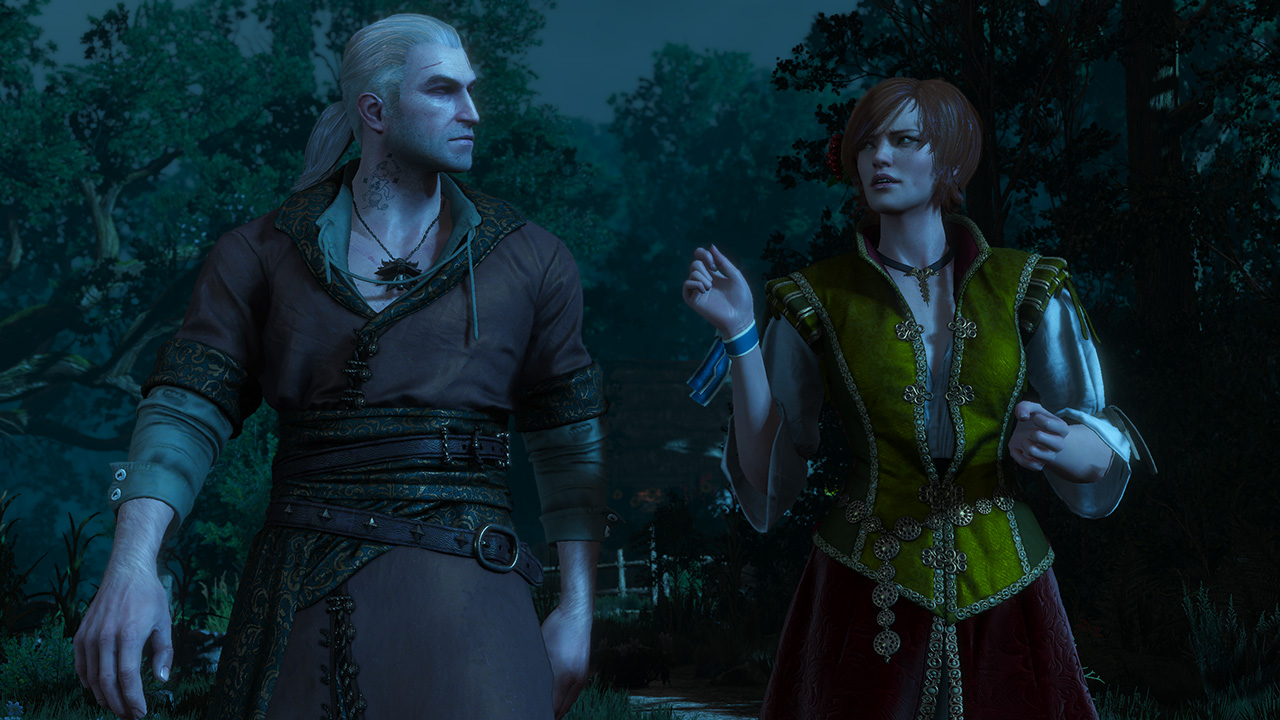
“Be careful what you wish for”. An adage old as time itself, cornerstone of fables and mythology, and reoccurring theme in fairy tales. A warning, for an impulsive thought or desire acted upon can be woven in unforeseen misfortune. Dark and fantastical, it’s to no surprise that this phrase is fittingly at the core of The Witcher 3: Wild Hunt‘s first of two expansions: Hearts of Stone. As a series renowned for its Grimm-like re-imagining and subverting of gothic yarns and stories, Hearts of Stone see’s Geralt yet again fallen victim to an intriguing mystery of shadowy characters, twisted histories, and some good old fashioned undead slaying.
Admittedly I was a little worried that my 180 hours spent in the world of Wild Hunt would be a wee bit difficult to supplement with more, potentially having burned myself out (in the most positive way) with the base game’s ludicrously dense and memorable content, along with its satisfying ending. But here I am, credits rolling on the expansion pack, looking at the play time count and relishing in each and every one of those additional 10 or more hours it provides. It couldn’t be easy building upon something already lauded for its scope and quality, yet here we are.
The less revealed about Hearts of Stone‘s narrative, the better. Nevertheless, the basics are that Geralt finds himself in desperate need of help, said help coming in the form of the suspiciously convenient appearance of a man who he has met before. And if the opening quote didn’t give things away, subsequent events naturally go astray, Geralt required to complete three “wishes” for yet another character to rid himself of his newly acquired and frankly hideous facial scars. That and to just end this mess. Hearts of Stone can be best likened to the Bloody Baron quest arc from the main game, wherein the story is centralised around one or two key characters, their quests on a surface level seemingly simple and superficial, yet each and every one hiding deeper, darker mysteries and truths. Like the Bloody Baron, there is more to almost every character you encounter, and pushing forward is the only way to unravel their typically sordid histories towards unexpected conclusions.
Context and concept diversity is where Hearts of Stone really excels. Given the surprisingly low price I was expecting a repeat of well trodden ground. Not so. Thematically, Hearts of Stone explores new set pieces and scenarios, inviting you to partake in adventures, events, and exploration that while drawing from ideas from the base game goes a long way to reinvent them into something totally fresh. I was particularly impressed by how thorough and developed these quest arcs are; your three tasks are each substantial in content and length, as I routinely figured a particular action would bring about conclusion to find I was only halfway through. Hearts of Stone takes an idea for a cute or dark little story, and works its hardest to stretch them as far as possible. And it’s not artificial padding or excessive grinding, either. It’s real development, real areas and content and surprises and characters and so on that continue to pile up on top of each other until you’re looking far back at how much you’ve played knowing there’s still so much more to go. The team working on Hearts of Stone have been almost self indulgent in the expansiveness of quest arcs, if just to remind you of the “Oh wait, it’s not over?!” moments that littered Wild Hunt, and to prove that even with $10 DLC production restrictions they can do it all over again.
Hearts of Stone also impressively expands the map, both to the north and east of Novigrad/Velen, adding in new towns, locations, and point-of-interest hotspots for you to explore and discover. Admittedly, a majority of these locations are built from assets recycled from the main game. And an overwhelming majority of these points-of-interest are of the monster nest, hidden treasure, and so forth variety. But, just like main game, these are all supplemented with notes, corpses, and sensible aesthetics to believably integrate them into both the game world and the Hearts of Stone mystery, and every so often delight with a tough enemy encounter. So no, Hearts of Stone is not particularly meaty in deep, narrative driven side quests. The side content is instead reserved to these simple map markers, discovered and played with autonomy. But the work is nevertheless comprehensive and impressive. I very much feel these missions, along with the main mission itself, are geared towards end or post game players who’ve levelled and geared themselves through the roof. Point-of-interest content is largely familiar, but in its toughest variations, as a way of providing these arguably over-levelled characters who found Wild Hunt‘s end game state and world all too easy a final, authentic challenge. North and east of Novigrad are new playgrounds for the tough kids go to play, and you’ll realise this when you’re ambushed by level 30-something wolf packs, a far cry from the single digit mainstay.
And herein lies a fault in Hearts of Stone, which is less to do with the content itself and more how it highlights the rougher spots of Wild Hunt. The reality is, while I like Wild Hunt‘s combat system plenty, here CDPR have struggled a bit to complement high level, high difficulty play. Hearts of Stone adds in several new bosses, all impressively unique, but the ease and adaptability of fights will depend entirely on your build with a healthy dash of luck. When it works, and you’re up against an intense individual that demands careful play and precise dodging, the expansion provides some wonderful encounters that were nowhere to be found in Wild Hunt‘s end game. At its worst the team regressed to over powered one-hit-kill attacks, questionable hitboxes, and attack speeds that seem one step ahead of your dodges. It’s a rare occurrence, but it’s there, and simply exposes more cumbersome aspects of the combat and control systems. Additionally, the expansion targeting 30-and-up levelled characters is a double edged sword: the challenge is very welcome, but further levelling and gearing is made borderline redundant. At this point you’ve probably got yourself a powerful, maxed out build, so levelling further simply leaves you buying new skills that you’ve been ignoring, not out of level range but due to play preference. And even then, you probably still wont use them. The same holds true for the newly added runesmith, a character that can channel standard runes into runewords that imbue weapons and armour with very specific attributes. It’s a fantastic idea to diversify builds, but at this point…for what? End game build additions to end game content limits the window of use, though perhaps New Game Plus characters will find runesmithing valuable.
Finally, Hearts of Stone brings the return of Shani, the firey medic present in both the Blood of Elves novel and the original The Witcher game. A fan favourite, her return both offers a romance arc along with integration into a couple of the main quests, and all are handled with a great deal of legitimate investment that should appease fans of this favourite. Again, much like the main quest, the less said the better. But Shani is a delight with which to converse, a conduit to some interesting conversations, particularly on the topics of romance and love in the lives of witchers and medics. It’s a dog’s life, as Zoltan would put it, and it’s wonderful to see a chemistry between Geralt and Shani as two characters who know this truth better than most. Plus she’s up for a round of Gwent, delivering on the primary reason anybody would want to purchase a The Witcher 3 expansion.
Value is inherently subjective, and a really hard thing to judge in the modern landscape of digital content. First and foremost interest in the main game, and simply experiencing more of it, is a defining factor. But then there’s what the new content actually is, diversity within, and how long it lasts. I’m sure we’ve all purchased DLC or “expansion packs” and felt wholly underwhelmed by the content within. Or avoided purchasing altogether due to an extravagant and ludicrous entry price.
Hearts of Stone is the complete opposite of that. It’s two halves. One half, more of the same, expanding the game world and reusing tried and true content now geared towards high level play. All optional, yet inviting to those hungry for more standard witchering at a challenge better suited to their powerful end-game build. The other half is a dark and twisted series of narrative driven quests, each envisioned and constructed with utmost care for the high standard set by the main game’s most engrossing arcs. I suspect for many fans Hearts of Stone will be home to some of their fondest memories from the game entire. And for the rest it’ll be a potent reminder as to why The Witcher 3: Wild Hunt is far and away one of the best games of the year, and how easy it is to get caught up in the world all over again.
To come full circle: fans wished for more The Witcher 3, and with Hearts of Stone they’ve got it in spades, at incredible quality and an affordable price. The old adage would imply there’s some tragic twist or lesson buried in here somewhere, but I can’t see it. Who knows? Maybe expansion pack numero duo, Blood and Wine, will suck. Given the standard of quality so far, I doubt it.
Among the strongest, most varied and memorable questing in the series. Excellent value for money.
Side content limited to standard POI. High level play exposes roughness in combat. Extra levelling/crafting redundancy.

